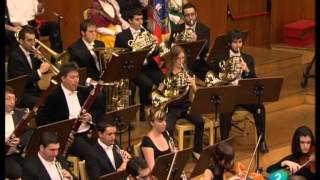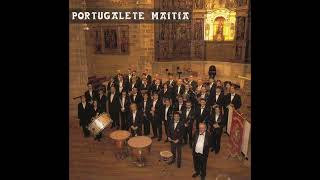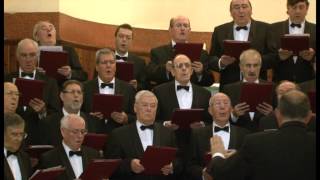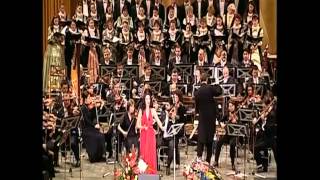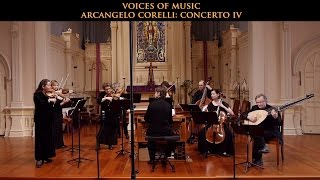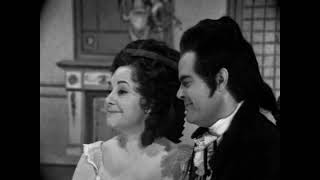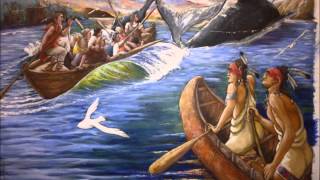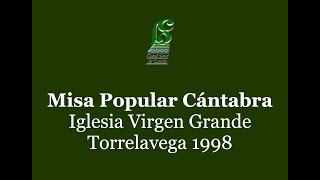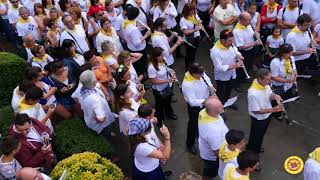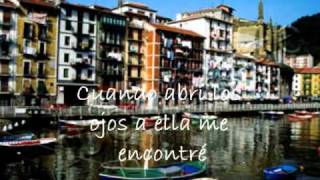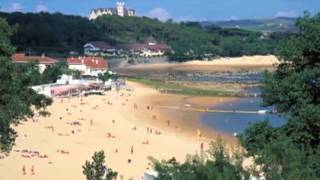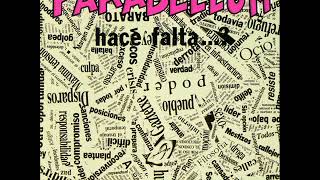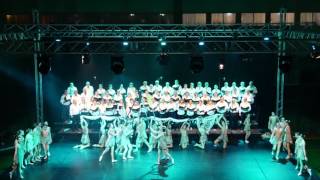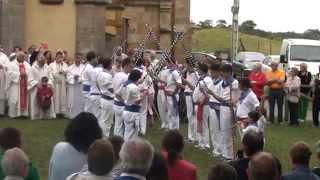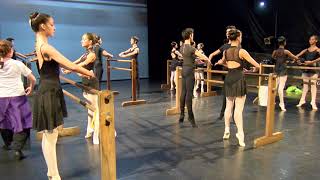The second Sunday in August is Cantabria Day, also known as Mountain Day.
On August 14th, the Patron Saint Festivities of the Biscayan towns of Ondarroa and Portugalete begin.
On August 15, the Catholic Church celebrates the day of the Assumption of the Virgin Mary.
Recommended music videos for initiation to classical music
Cantabria Day , traditionally known as La Montaña Day , is celebrated on the second Sunday of August in the town of Cabezón de la Sal and is a day of exaltation of the customs, traditions and ethnographic values of the community. During this time thousands of people fill the streets of the town around the main activities, which revolve around folklore, rural sports, crafts and market of typical products, parade of floats and carts and the Tudanco cattle parade . All of this enlivened with typical Cantabrian music and dance through uninterrupted demonstrations by groups of dancers, picayos, tambourine players, soloists, rabelistas, piteros, bagpipers, troubadours, rounds of waiters, etc. The celebration has been declared a Festival of National Tourist Interest since 1972.
The video that we present today is a florilegium of mountain songs performed by a cappella soloists or accompanies, or songs arranged for choir, for symphony orchestra or for choir and orchestra and performed by the Torrelavega Choral Society (director, Manuel Egusquiza Ochoa ) and the Cantabria Infinita Symphony Orchestra with maestro Mariano Rodríguez Saturio at the baton.
The San Roque Festival has been celebrated in Portugalete (Bizkaia) for centuries. They begin on August 14 with the chupinazo, the reading of the proclamation and the Tamborrada Portugaluja . On the 15th, the day of Our Lady , starting at eight in the morning thousands of people in the company of the Municipal Music Band walk through the streets of the town for two hours singing the Portuguese Diana. On the 16th of San Roque , in the morning, the traditional procession from the Town Hall to the saint's hermitage; at 6 in the afternoon the Great Bajada , through the streets of the town to the Plaza del Solar where the traditional Dance of the Hour with the Municipal Band will take place. San Roquillo Day (the 17th) is children's day. At night the Jarrilla will be burned, ending the patron saint festivities.
Portugalete Maitia is the song, with lyrics by Iñaki Arenaza , composed by the director of the Municipal of Portugalete , Joseba Sáenz Ortuondo, to open the Tamborrada portugaluja and which gives the title to the CD released by the Municipal Music Band of Portugalete in commemoration of the centenary of its foundation; This CD was recorded with the collaboration of the main choral groups of the Villa . I (0´00´´) PORTUGALETE MAITIA (Santa María Choir, Friends of the Tamborrada and Municipal Band).-. II (4´26´´) LA LLANISCA (Friends of the Tamborrada and BM).-. III (7´19´´) VIRGIN OF THE GUIDE (Friends of the Tamborrada and BM).-. IV (9´17´´) EL AIROSO (Friends of the Tamborrada and BM) .-. V (12´55´´) PORTUS GALEOTE (Barbis Taldea and BM) .-. VI (19´56´´) BOTECITO (Otxote Danok Bat and BM) .-. VII (23´30´´) TO PORTUGALETE (BM) .-. VIII (26'34'') AUPA PORTU (Orfeón Jarrillero del Elai Alai and BM) .-. IX (30´45´´) THE BURIAL OF THE SARDINE (Coral Pleamar and BM) .-. X (34'43'') BUENAVISTA NEIGHBORHOOD (Coral Santa María and BM) .-. XI (40´12´´) EUSKAL HERRI POLITA GORA (Otxote Danok Bat and BM) .-. XII (43´00´´) PORTUGALETE NOBLE VILLA (Barbis Taldea and BM) .-. XIII (48´28´´) Diana Portugaluja (Portugal and BM choirs).
The Andra Mari Festivals are the patron saint festivals of Ondarroa (Bizkaia) in honor of the Virgen de la Antigua , patron saint of the town. It begins on the night of August 14 to 15 with the descent of Leokadi from the church of Santa María and ends on the 17th, Arrantzale Eguna (“Fisherman's Day”), which is the big day along with the 15th, day of the Virgin and in the middle, on the 16th of San Roque , "day of the gangs." All of this with parades of txistularis, tambourines, giants and bigheads, a marmitako contest, the kukaña, the geese, bicycle races, soccer games, dances, concerts by rock groups, popular foods, brass bands, fireworks, mariachi concerts or special area for txikis activities. In 2002, Gazte Eguna (Youth Day) was incorporated for August 13.
The Orfeón de Sestao was founded in 1906 as the Parish Choir of the Church of Sta María with Vitorio Epalza as director, obtaining in 1944 first prize among choirs in Bilbao . In 1973 they recorded two albums in Madrid with the Columbia label; one with sacred songs and another with Basque choral music. In 1975, as its presence was no longer necessary at liturgical functions, it became independent from the Parish; Since then his performances have multiplied, performing alone or with different artists and high-level professional groups. The Orfeón is made up solely of men, usually singing in four deep voices.
Today they offer us Boga voga , a popular song that mentions the departure to the sea of the Ondarroa arrantzales, arranged by Jesús Guridi .
Charles Gounod (1818-1893) was a French composer known to the general public for his Ave Maria , which we offer today. He was born in Paris and received his first classes from his mother until he enrolled at the Conservatory . He was a very prolific composer with both sacred and secular works; Among all, his opera Faust deserves special consideration. His influence on other French composers such as Bizet, Saint-Saëns and Jules Massenet is undoubted. Even Debussy himself declared it "necessary" in that its aesthetics represented for that generation of French a powerful counterweight to the overwhelming Wagnerian push .
The Bach/Gounod Ave Maria is a composition on the Latin text Ave Maria originally published in 1853. The piece consists of a melody by Gounod , designed to be superimposed over the Prelude No. 1 in C major, BWV 846, from the Book I of The Well-Tempered Clavier by JS Bach written 137 years earlier. Along with Schubert 's Ave Maria , Bach-Gounod 's Ave Maria has become a fixture at wedding masses, funerals and celebrations of different kinds. There are very different arrangements for guitar, violin, string quartet, piano, cello, trombone ensemble, opera singers, choirs... which have been recorded and/or performed in public hundreds of times during the 20th century . Today it is offered to us by the Romanian soprano Angela Gheorghiu .
Recommended classical music videos
Arcangelo Corelli (1653-1713) was a violinist and composer of the Italian Baroque period. Born in Fusignano (province of Ravenna) since childhood he studied violin in his hometown. In 1666 he traveled to Bologna , where he studied with Giovanni Benvenuti and Leonardo Brugnoli . Five years later he settled in Rome , where he would achieve extraordinary fame as a violinist, while perfecting his compositional technique. By 1700, he was already the first violinist and concert director of the Chancellery Palace and in 1706 he entered the Arcadia Academy . Today he is considered one of the greatest precursors of the preclassical sonata and the representative par excellence of the concerto grosso . His music greatly influenced German composers, especially Bach and Handel .
Catalog of Corelli's works . His works are classified by their Opus number (from the Latin opus 'work'; op. abbreviation) which is a term used in music to catalog the works of most composers since the 17th century .
The 12 concerti grossi, op. 6 form a collection of twelve concerti composed by Arcangelo Corelli probably in the 1680s although they were not prepared for publication until 1714. The Concerti Grossi of Op. 6 were written for his own concertos, with Corelli himself playing on concertmaster. The orchestral ensemble is made up of the concertmaster (a first violin, a second violin and a cello concertantes) the 'grosso' of the orchestra and the basso continuo for the harpsichord to which the portable organ and the lute can be added. (Extracted from LA Phil)
The movements of Op. 6, No. 4 follow the outline of the church sonata : slow-fast-slow-fast. The majestic opening (0´00´´) of ADAGIO sets a festive tone; the following ALLEGRO (0´20´´), rich and contrapuntal in texture, abounds in the interaction between concertino and ripieno. The slow movement of the ADAGIO (3'30'), with its gently falling melody, offers a lyrical contrast to the pomp of the Concerto 's opening. Corelli expands the concluding fast section in two movements, both marked by transparent textures and a predominant sense of lightness: An elegant melody unfolds over a propulsive bass line in the VIVACE (5´03´´), and the final Allegro ( 6'07'') is infused with the spirit of dance. (Extracted from LA Phil)
Domenico Cimarosa (1749-1801) was an Italian composer born near Naples . As a child, he entered the Musical Institute of Santa María de Loreto where he remained for eleven years. At the age of 23 he presented his first work, an opera buffa titled Le Stravaganze del Conte , which had a well-deserved acceptance: after it came other similar works that led him to reside in Rome, Naples and Florence where he composed comic and serious operas, cantatas and sacred compositions. In 1787, Empress Catherine II invited him to Saint Petersburg , where he wrote numerous short works. At the invitation of Leopold II , he moved to Vienna where he wrote his masterpiece, the opera Il Matrimonio segreto and other works, all of them celebrated with great success. He died in the Austrian capital in 1801.
Il Matrimonio segreto is an opera buffa in two acts with music by Domenico Cimarosa and an Italian libretto by Giovanni Bertati , based on the play The Clandestine Marriage by George Colman, the elder and David Garrick . It was premiered on February 7, 1792 in Vienna , at the Imperial Hofburg Theatre, in the presence of Emperor Leopold II ; It soon became a very popular example of opera buffa and is, without a doubt, one of the best of the 18th century , apart from those of Mozart . The script is based on the standard format of impossible situations, costumes and a happy ending. Although it has melodious and enjoyable passages, the work is often compared to other comic operas, particularly those of Rossini and Mozart .
Cimarosa 's opera comprises a series of arias, duets and trios interspersed and connected by recitative. Mozart 's influence is evident in the endings of each act with a series of vibrant ensembles involving all the singers.
For the Italian opera of the 18th century , The Secret Marriage represents the conclusion of an era and many indications of openness towards the future of melodrama. Its premiere was the occasion of the biggest encore in opera history; Leopold II liked it so much that he ordered dinner to be served to the company and the entire opera to be repeated immediately afterwards. The work was performed widely throughout Europe during the composer's lifetime and also afterwards. It would later be one of Verdi 's favorites.
Today we offer it in a German version conducted by the French maestro Lorin Maazel
Jesús Guridi (1886-1961) was born in Vitoria-Gazteiz into a musical family. After the family moved to Madrid , Guridi entered the Conservatory ; However, the economy did not go well for their parents, so they moved to Bilbao , where thanks to their patron, the Count of Zubiría , they were able to move to Paris and enter the Schola Cantorum to study piano, organ, counterpoint and composition. After finishing his studies, he went through Belgium , Cologne and Munich to delve deeper into them. Returning to Bilbao , at the age of 21, he took charge, as director, of the Bilbao Choral Society , a job that he combined with that of organist at the Basilica (now Cathedral) of Santiago . In 1939 he returned to Madrid , as director of the Conservatory , where he died at the age of 75.
Eusko irudiak (Basque Paintings) is a set of three prints by Guridi whose action takes place in the fishing port of Ondarroa , Bizkaia. The FIRST PICTURE (0'00'') describes life in the port: with the women sewing the nets, and the men embarking, while the Boga boga is heard. In the SECOND PICTURE (5'44'') the storm appears with the restlessness that it produces until the weather subsides. In the THIRD PICTURE (10'38'') the sailors arrive safely at port while they are welcomed with happy songs and dances, thanking the Almighty for the event. The work ends with the Boga boga song, which places us back in Ondarroa .
The version is by the Orfeón Donostiarra with the Euskadi Symphony Orchestra directed by maestro Miguel Ángel Gómez Martínez .
Nobel Sámano (1933-2019) is probably the most important contemporary composer of Cantabrian popular music. Born in Torrelavega (Cantabria), he began his piano studies as a child under the tutelage of his father; which later led him to complete it with composition and direction. A life dedicated to music and dignifying the folklore of Cantabria . Considered one of the most outstanding figures in the musical creation of his land, he combined his role as a composer with an entire career as a pianist, offering concerts in halls in Paris, Madrid and Barcelona , among other large cities. His work, as a composer, includes pieces for solo piano, songs with piano and choral music, as well as orchestral works such as the Fantasia on Cantabrian themes . He died in his hometown of Torrelavega at the age of 85.
One of his best-known works is the Cantabrian Popular Mass , which we offer today and which premiered on February 8, 1997 in the Cathedral of Santander ; This composition has been performed in the cathedrals of León and Santiago and in reference churches in Madrid, Barcelona, Pamplona and Cuenca , among other venues, as well as in numerous churches and auditoriums in Cantabria . The work, without faithfully following the liturgical text, does so in a rather sentimental, traditional, customary and folkloric way. The score is considered one of the most important contributions to the popular polyphonic repertoire of religious style in Cantabria in the 20th century . (Text extracted from Lola Gallardo 's article in Diario Montañés ).
Today it is presented to us by the Escolanía de Laredo , the Salvé Choir of Laredo , the Ronda Valle Choir of Camargo , the Luétiga Instrumental Group and the Ntra Sra Dance Group of Covadonga , all of them under the baton of maestro José Luis Ocejo .
Recommended music videos for all tastes
The Portuguese Diana with lyrics by Pedro Heredia and music by Marcelino Amenábar (first director of the Municipal Band of Portugalete ), is a fusion of the well-known military reveille and the composition A la verbena also by maestro Amenábar . In the early hours of the morning of August 15, thousands of people gather in front of the City Hall to carry out the Portuguese Diana , whose objective is to wake up everyone jarriller@s in order to invite them to the party. You go to it without any instrument since the person in charge of marking the sounds is the Municipal Music Band . After two hours walking through the streets of the town , you arrive at the Plaza de la Ranchería , where people taste the traditional garlic soup.
Nerea Sáenz Artetxe grew up surrounded by music. His father and uncle formed the group Ondarruko Zintzoak in the seventies and there was always a song playing at home; how not to take over. With very varied influences, from classical music, author songs, jazz, Brazilian, to pop , he created the bands Estación Norte and Marte Menguante . She published her album Estación Norte in 1999 with the EMI record company and has collaborated as a composer for the television series “ Compañeros” and for Cartoon Network .
The song Tierra , dedicated to Ondarroa, tells us about love and gratitude to the roots, to the land, to the family... With very local references such as those of Zubi Zahar , the Alameda , the sirens of the port... and with lines performed with emotion, this very personal song manages to connect with a global feeling of longing that captivates those who listen to it; It also has a very careful production and a very folk flavor that introduces us body and soul to Ondarroa with the graphic report by Leire Larrinaga .
The mountain song or tonada montañesa is a folkloric musical genre of a lyrical nature developed in Cantabria , the main lyrical expression of the sung oral tradition of Cantabria along with the marzas, the jota montañesa (sung), the picayos, the aguinaldo and the romances . The Montañesa Song is performed mainly “a capella”, although sometimes a native instrument is used to accompany it, such as the mountain pitu and drum, the bagpipe , the tambourine or the castanets (tarranets). Apart from being performed individually, it is also common to perform it in collective formations through “Chorals” or “Cantos de ronda”.
Today we offer the tune Qué bonito es Santander performed by Avelina Fernández .
Parabellum is a Basque punk rock music group formed in 1983 in Barakaldo (Bizkaia). by Josu (drums), Juanan (guitar) and Txisko (bass). In all these years the releases of their albums have been continuous, in addition to their performances and tours throughout the state and Europe (three times to Switzerland...), collecting excellent reviews. The renewal of its components has also been continuous due to the various circumstances that have arisen.
Currently, the band made up of Josu Korkostegi (vocals and drums), Lino Prieto (electric bass and vocals), Pedro de la Osa (guitar and vocals) and Iñaki Setién (guitar) continues to make recordings and live performances, gathering abundant public and magnificent reviews.
Recommended peculiar videos
Portus Galeote . As a result of the collaboration between the Municipal Band and the different popular associations, this song emerges with lyrics by Juanjo Tellaetxe , music originally by the director of Barbis Taldea , Txema Lorente, and arranged for Band and choir by the Band director Joseba Sáenz Ortuondo . In the video that we present today, the staging is enriched by the choreography of Pilar Agirregomezkorta and executed by her Classical Ballet Academy . At the helm, the current head of the Municipal, teacher Jabier Ituarte Aulestia .
The Dance of the Spears is one of the most deeply rooted examples of Cantabrian folklore in the region, which has its origins in the 16th century . It is a dance that is celebrated in honor of the patron saint of Ruiloba , the Virgen de los Remedios , on July 2, the day of her festival. Only men participate in the dance, among which one of them stands out, the baseball player , who, equipped with a command staff, leads the group in the center, while the rest perform a dance using long sticks, spears, according to the order of the rabonero. or zaguero , who indicates the variants of the dance using castanets. The dance that we offer today is declared by the Government of Cantabria to be of intangible cultural interest along with eight other Cantabrian dances, as they are dances that are part of the cultural heritage of the Autonomous Community .
Basque dances (in Basque, Euskal Dantzak ) are a very important part of Basque culture and the fundamental part of its folklore. Each historical territory, or province, has its own and each town also has its own that is customary to dance at its major festivals. Among the most notable dances we will mention the pilgrimage or plaza dances , based on the dances that were celebrated in the pilgrimages and whose participation was popular and spontaneous. The sword dances that have an obvious parallel with the European ones of the same type. The end-of-festival dances that are performed to mark the end of some festivities, the end of a cycle and the beginning of another.
Today we present a small appetizer of these dances prepared and offered by the dantzari and choreographer Luis Exaburu (Latxanbre) with his formidable group Txanpa.
The National Ballet School of Cuba is the educational institution specialized in teaching dance, the largest in the world and the most important in the country, located on the Paseo del Prado in Havana ; The ranks of the prestigious National Ballet, the Camagüey Ballet and other dance companies on the island and the world are nourished by it. The creation of this school dates back to 1931, when the National Ballet School of the Sociedad Pro Arte Musical was founded in Havana ; --this was the driving force and starting point of ballet teaching in Cuba . The school has set standards in classical ballet, since dance legends such as Alicia Alonso , Fernando Alonso and Ramiro Guerra have been trained here.
In the mid -20th century , the Alicia Alonso Ballet Academy was created; It played a crucial role in the development of dance in the country and became the distinguished manager of the pedagogical method of the Cuban ballet school, which currently has great prestige throughout the world. With the triumph of the Cuban Revolution in 1959, the school lost its private character and became part of the National School of Art, with the fundamental goal of creating the bases of the ballet teaching system, placing emphasis on purely Cuban practices. . It is from here when the teaching of ballet in Cuba takes on a real boom, due to the support given by the state and the efforts of the main figure of ballet in Cuba , Alicia Alonso . The quality of the school is supported by numerous medals and awards received in different competitions around the planet.
Recommended music videos for children
Various Wikipedia articles have been used to write these texts.
The texts of Videomusicalis are written in Basque, Spanish and English.





